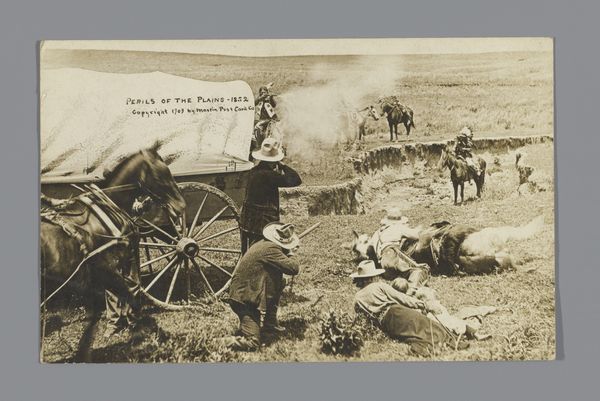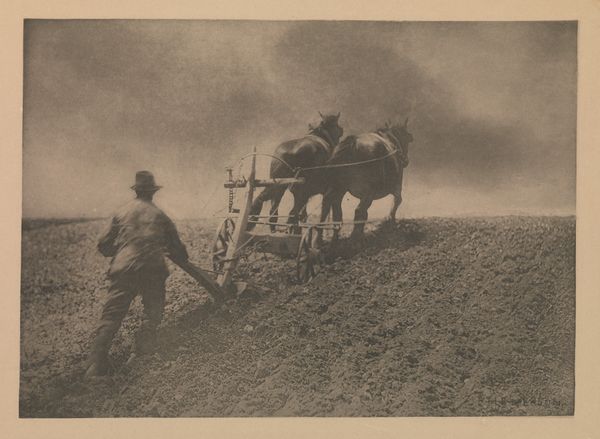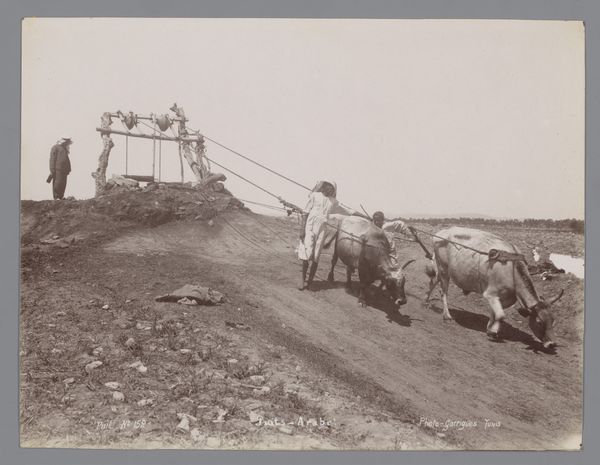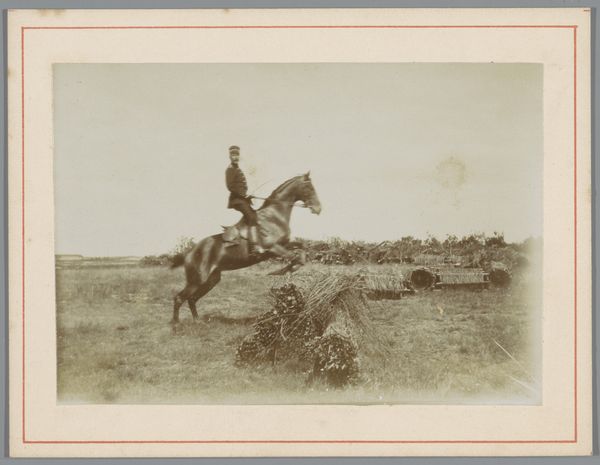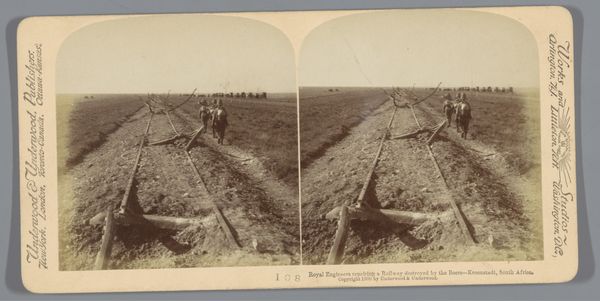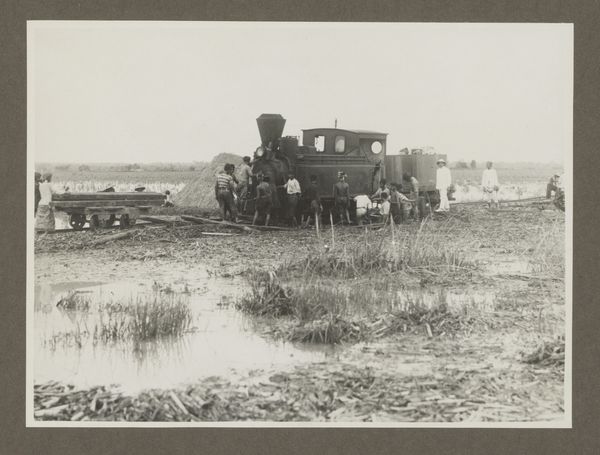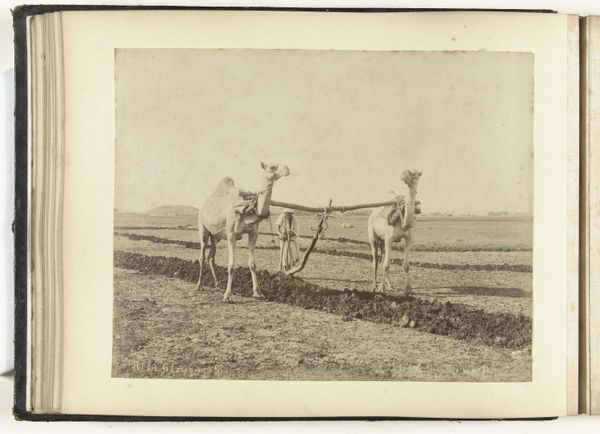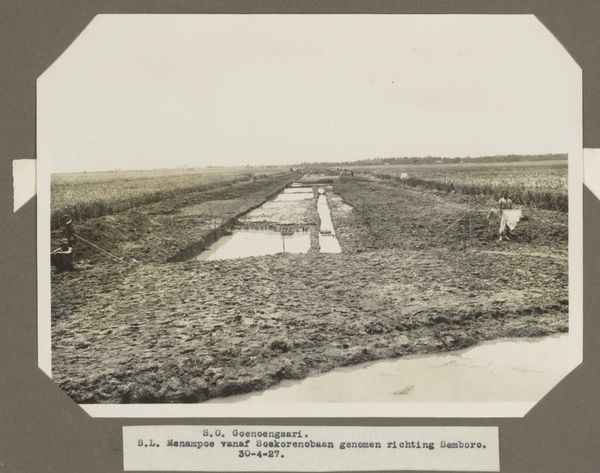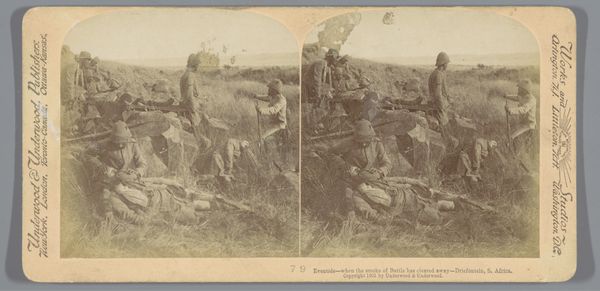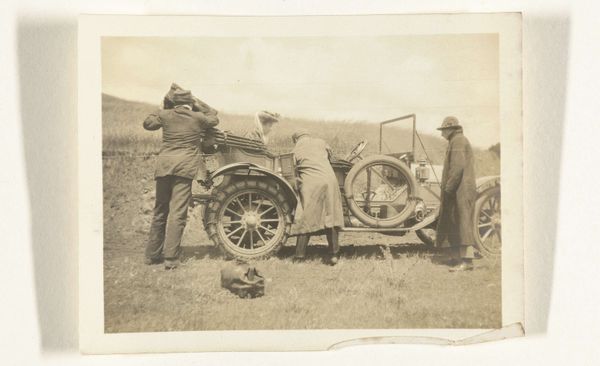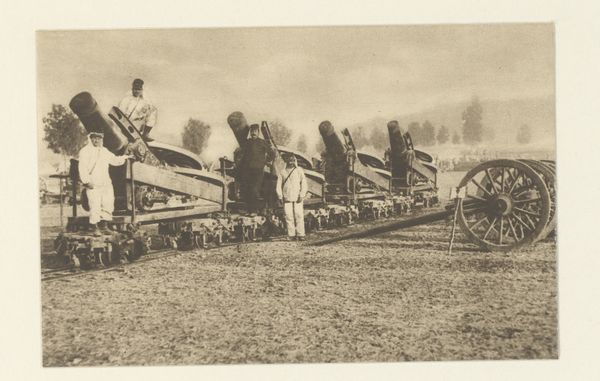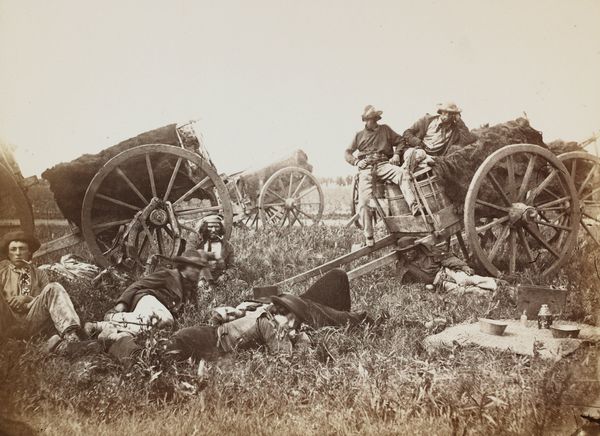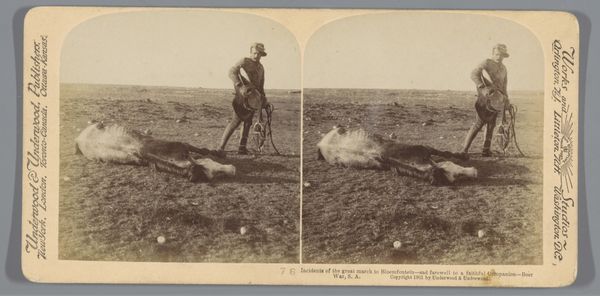
print, photography
#
narrative-art
# print
#
landscape
#
street-photography
#
photography
#
genre-painting
Dimensions: height 86 mm, width 138 mm
Copyright: Rijks Museum: Open Domain
Curator: This photograph, titled "When we go after anything we get it," was captured around 1909 by William H. Martin. The work exists as a print. What are your initial thoughts? Editor: It’s a rather bleak scene, isn’t it? Stark, with these determined, if not manic, figures in their primitive vehicles… and a rabbit, tied up? It speaks to a certain...ruthlessness. Curator: Ruthlessness, certainly an interpretation! What interests me are the vehicles themselves – the rudimentary cars are key here, representing both a technological advancement and the means by which the subjects exercise their will over the landscape. Think of the social context: early automobiles were still a symbol of wealth and industrial innovation, yet their function here seems solely linked to capture. Editor: Ah, but consider the rabbit! Across cultures, the rabbit can represent both vulnerability and cunning. The very act of subduing such an animal and presenting it as a trophy is loaded. It’s a statement about power dynamics, and control over nature. The title itself is an act of defiant assertion. Curator: Agreed. It makes me think about labour – capturing and processing, let alone eating the rabbit are significant labour and resource investment activities for a time where industrialisation has removed the necessity for many people to forage to survive. In the picture, all activity centers around resource acquisition – which, perhaps makes your point about the inherent 'ruthlessness' more poignant! Editor: Indeed, the symbolic weight here is substantial. It reflects, perhaps unconsciously, the darker aspects of ambition and the cost of "getting" what we desire. It almost becomes a macabre joke on human overreach. The entire composition seems intentionally bleak and vaguely hopeless, like it will end badly. Curator: Your perspective makes me reassess what I initially thought was a jovial photo – now I feel compelled to reconsider how emerging mechanized transportation intersects with existing economic patterns for working people at the turn of the century! Thank you for those symbolic observations – they bring new and vital depth to this scene. Editor: And I appreciate your focus on the material reality – it brings a sense of tangible weight to my perhaps more ephemeral interpretations of symbol. A worthwhile discussion on all sides!
Comments
No comments
Be the first to comment and join the conversation on the ultimate creative platform.
